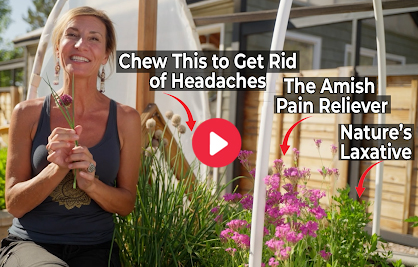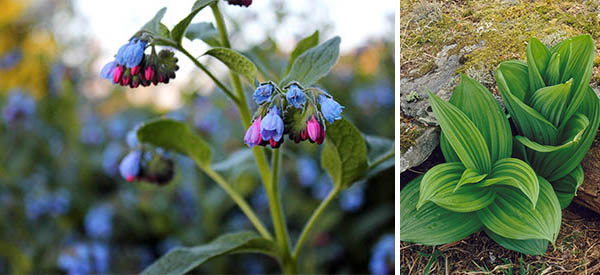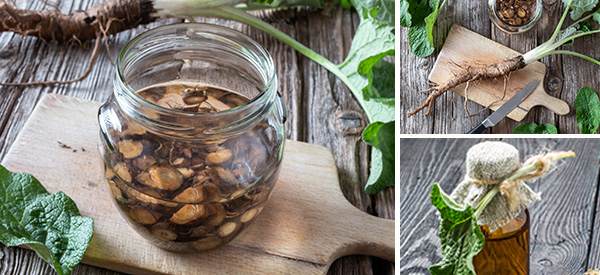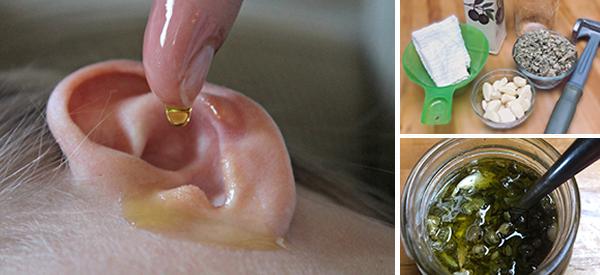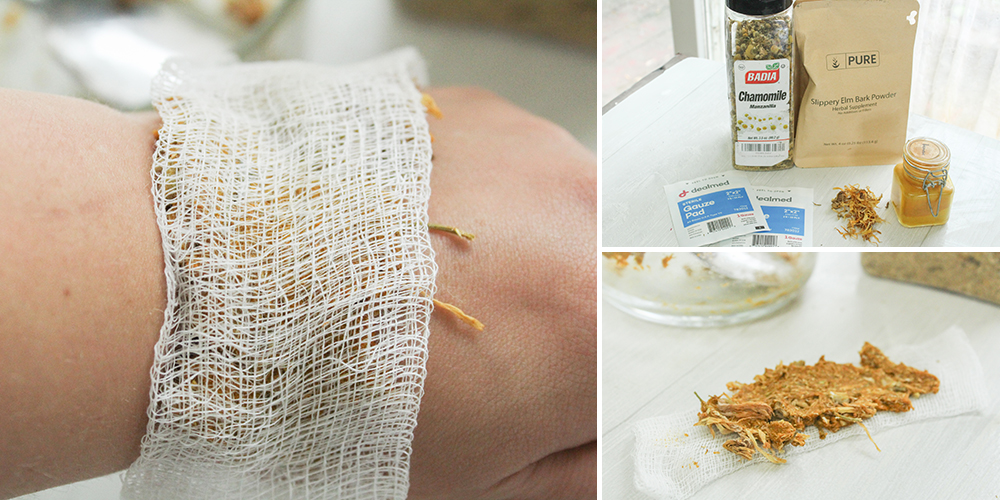
Anti-Inflammatory Herbal Band-Aid
Chances are, when you get injured, you reach for Neosporin and bandages. But nature has been healing wounds long before these things were manufactured.
Conventional medicated creams can often contain preservatives, petroleum bases, and synthetic chemicals that irritate the skin. And, the most sensitive skin certainly suffers from having store-bought bandages applied.
Nature has a better solution, and most of the ingredients are found within your kitchen.
In this post, we’ll uncover a few of nature’s best healing herbs and learn how these anti-inflammatory compounds can work together to create a toxin-free Anti-Inflammatory Herbal Band-Aid.
This remedy combines antibacterial, antimicrobial, and soothing herbs into a paste that’s great for applying to cuts, scrapes, and bug bites.
With a remedy this great, there’s no reason to turn to over-the-counter alternatives! Keep reading to learn how to make this healing wrap.
The Top Herbs for Healing
Before modern pharmaceuticals, people turned to balms, salves, and poultices to heal minor injuries. And, science validates what people have known for thousands of years; that herbs contain healing compounds that work just as great as store-bought alternatives.
For this remedy, we focus on herbs that are anti-inflammatory, antibacterial, and antimicrobial. This combination is perfect for healing minor wounds because it reduces redness, eliminates infection, and helps your skin to heal. Here are just a few of the top herbs for healing.
Calendula: These beautiful, sunny flowers are easy to grow in your herb garden, though sometimes you can find them in the wild. Calendula is one of the most common wound-healing herbs, and it’s often infused into oils and salves.
It’s antimicrobial, reduces redness, and fights harmful bacteria. Calendula is also great at boosting cell regeneration and minimizing scarring.
Lavender: The ultimate calming herb, lavender is also a speedy wound-healer. It can soothe and numb skin, making it a must-have for homemade burn creams and sunburn remedies.
Lavender also encourages relaxation, which can help the body heal faster and adds a lovely scent to any homemade remedy.
Chamomile: Like lavender, chamomile relaxes the body so it can heal faster. It’s full of antioxidant properties that detoxify wounds and eliminate harmful bacteria.
Chamomile is a great herb to keep on hand for bug bites and wounds that itch.
It’s worth noting that these herbs are only truly effective when they’re genuinely organic and free from pesticides or chemical treatments.
If your herbs are grown near roads with vehicle fumes or haven’t been carefully sourced, you might end up doing more harm than good. The difference between a remedy that works and one that doesn’t often comes down to the quality of your plants.
This is why growing your own is really the best approach. You don’t need much. Just a sunny window and some mason jars.
With seeds for calendula, lavender, chamomile, and yarrow, you can have a reliable supply year-round, even during winter.
Click here to get the high quality seeds you need.
Plantain Leaf: Commonly overlooked as a simple weed, plantain contains compounds like allantoin, which is anti-inflammatory and vital for skin repair. It’s also used for drawing splinters and stingers out of the skin.
You can create a balm out of it or do as they’ve always done: chew the leaf and then apply it to the skin.
Comfrey: Also known as “knit-bone” and “bone-set,” comfrey has a reputation for speedy bone and tissue repair. Like plantain, it contains allantoin to reduce inflammation and repair the skin.
However, comfrey should only be used on unbroken skin, as it can close a wound before the deep tissues have had time to eradicate toxins.
Turmeric: A popular ingredient in golden milk and Indian cooking, turmeric contains curcumin, which is a fabulous antimicrobial compound. It fights swelling and infections, and is best used on scrapes and cuts that are inflamed and swollen.
Slippery Elm Bark: This soothing bark has a mucus-like substance that coats and protects wounds. When applied in an Anti-Inflammatory Herbal Band-Aid, slippery elm bark keeps wounds moist so they can heal and scab properly. It’s perfect for applying to sensitive or irritated skin.
Yarrow: This herb is known for its ability to stop bleeding and speed up wound closure. Before they had gauze, this was what they would pack wounds with.
Yarrow is so potent that you can use it fresh or dried and have great results every time. Plus, it has ties to the mythical Achilles, amplifying its cool factor.
Making herbal remedies from scratch is rewarding, but there’s also something to be said for having solutions ready when you need them.
Tinctures are the most potent way to use remedies because they extract everything the plants have to offer, but they take time to infuse properly.
If you’re serious about having yarrow tincture on hand when cuts or burns happen, get a pre-made potent option here from a trusted herbalist.
It saves you months of preparation time while ensuring you have the quality and potency you’d get from making it yourself.
Unlike store-bought ointments, which often include one primary ingredient, herbal remedies contain multiple ingredients that work synergistically to promote healing.
Each ingredient in our Anti-Inflammatory Herbal Band-Aid was chosen to reduce inflammation and infection, boost collagen, soothe irritation, and beautify skin.
With no synthetic chemicals or toxins, this is a remedy you can feel good about using. Whether you’re trying to reduce scarring after stitches or calm a scraped knee, these herbs are the perfect for creating your own holistic first aid kit.
How to Make an Anti-Inflammatory Herbal Band-Aid
Making your own Anti-Inflammatory Herbal Band-Aid is easier than you’d think and totally rewarding. With a little harvesting (or shopping!), you can always have ingredients on hand to cover any “accidents” that come your way.
The recipe is quick, needs just a few ingredients, and can be customized to fit whatever you have. This remedy shields the skin and promotes healing from the inside out. Here’s how to make it.
Ingredients:
- 1 tablespoon dried calendula
- 1 tablespoon dried chamomile
- 1 teaspoon powdered turmeric
- 1 teaspoon slippery elm powder
- Just enough warm water to form a paste
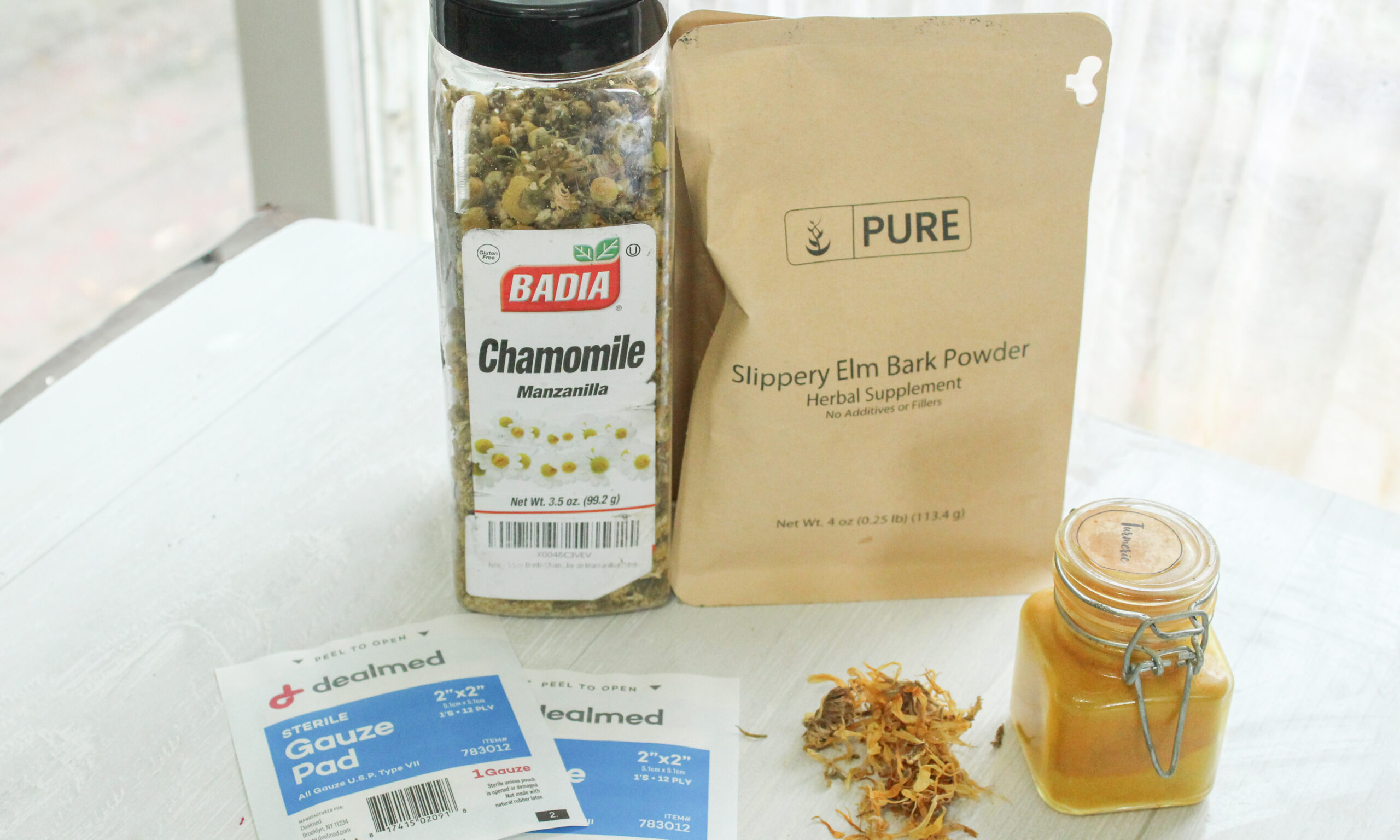
Step One: In a small bowl, mix the dried calendula, chamomile, turmeric, and slippery elm powder. 
Step Two: Add water, a teaspoon at a time, until the mixture resembles a paste.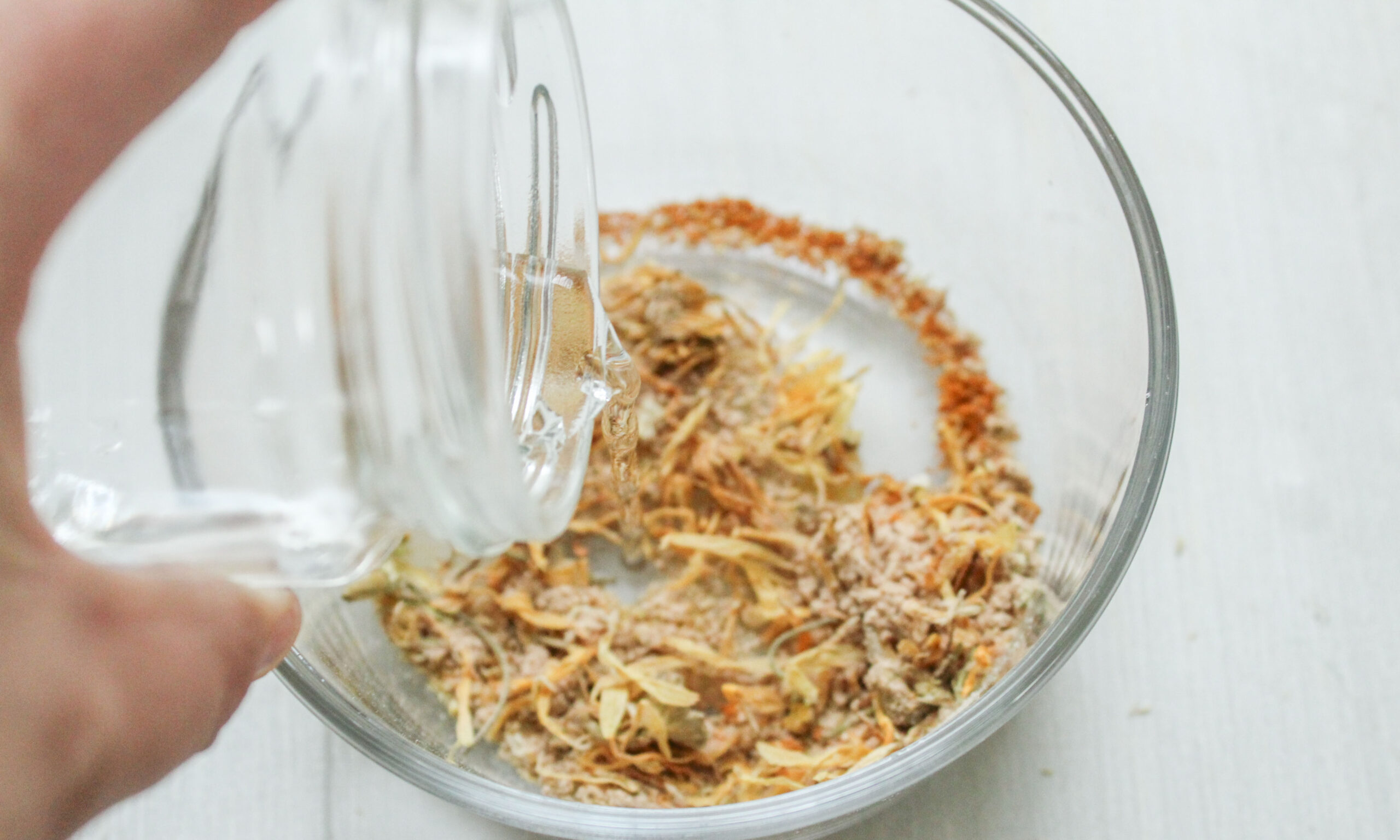
Step Three: Spread onto a piece of gauze or muslin cloth, and place directly onto the affected area. Gently wrap it with tape and leave it on for 30 minutes to a few hours. 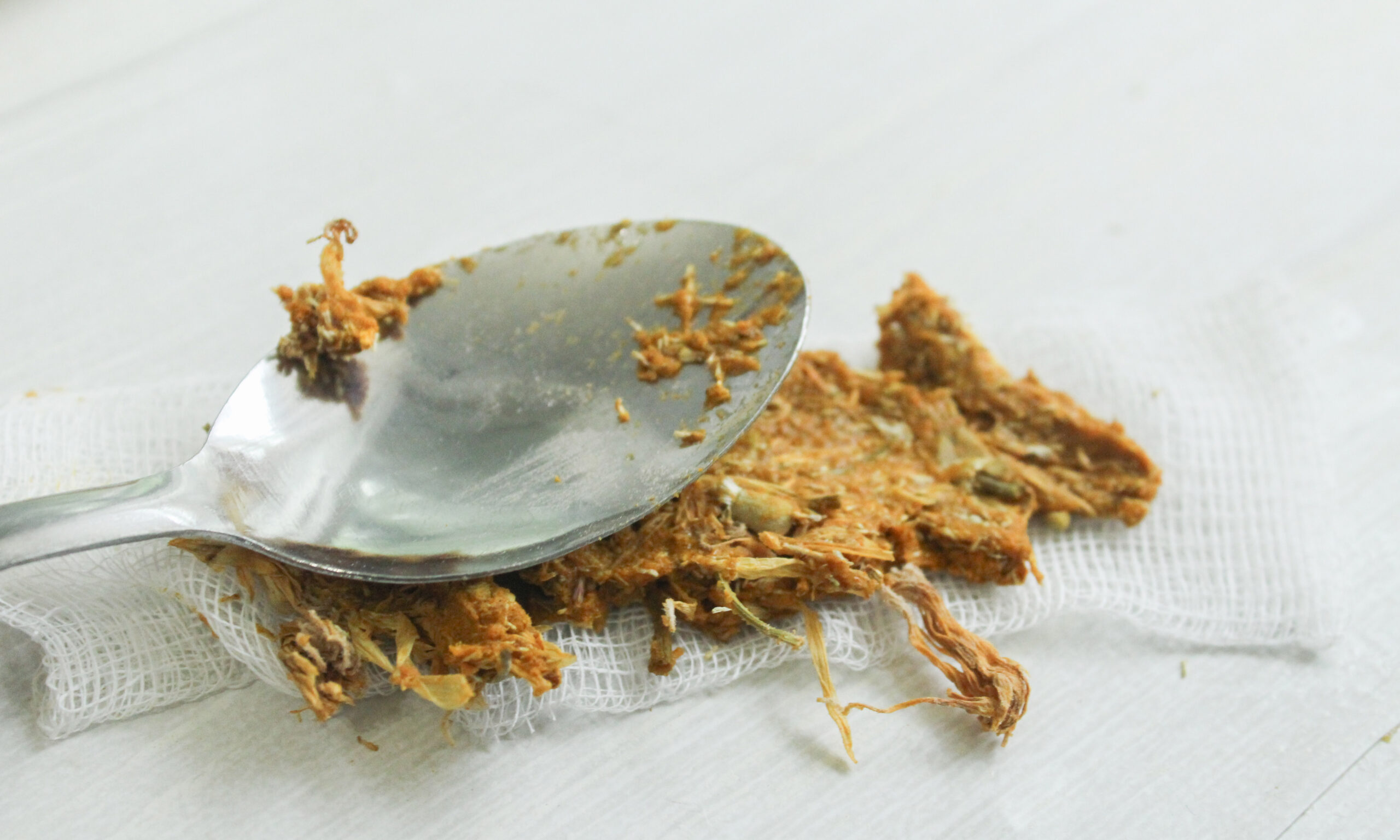
How to Use This Remedy
Applying the remedy as listed in the steps above gives it a breathable environment that helps heal the skin. Your Anti-Inflammatory Herbal Band-Aid is ideal for anyone who has no known allergies to the ingredients used. Keep in mind that little ones will need a little more tape to keep their bandage in place.
This remedy is perfect for those minor injuries, such as blisters, cuts, scrapes, or even bug bites. Avoid applying to deep wounds, punctures, or infectious injuries.
If you’re making the paste fresh, you can store any leftovers in the fridge for 5-7 days. You can use this herb combination in any salve or balm made with shea butter, coconut oil, or beeswax if you want a longer-lasting option. When stored properly, these salves can last up to 6 months.
An all-purpose salve with yarrow, calendula, plantain, and lavender becomes indispensable once you have it. You won’t always need a specialized bandage, but you’ll always want a first-aid salve that handles cuts, bruises, scratches, stings, bites, and any other skin issue that comes up.
With winter bringing dry skin, chapped lips, and seasonal irritations, having something that works for everything from cracked heels to minor wounds just makes sense.
Rather than scrambling to make one when an injury happens, grab an all-purpose salve here. It’s one of those remedies that pays for itself the first time you need it.
The Complete Home Apothecary for Skin Problems and Wounds
If making remedies from scratch is overwhelming right now, having a complete recipe book changes everything. The difference is finding one created by someone who actually knows what they’re doing. A who’s spent 30+ years studying plants and survived 57 days alone in the wild using only what nature provides.
But here’s what makes this different: it’s not just scattered recipes or vague instructions. It’s a complete home apothecary with 250+ remedies organized so you find exactly what you need instantly. Step-by-step instructions, color photos, exact measurements for every recipe you want to make.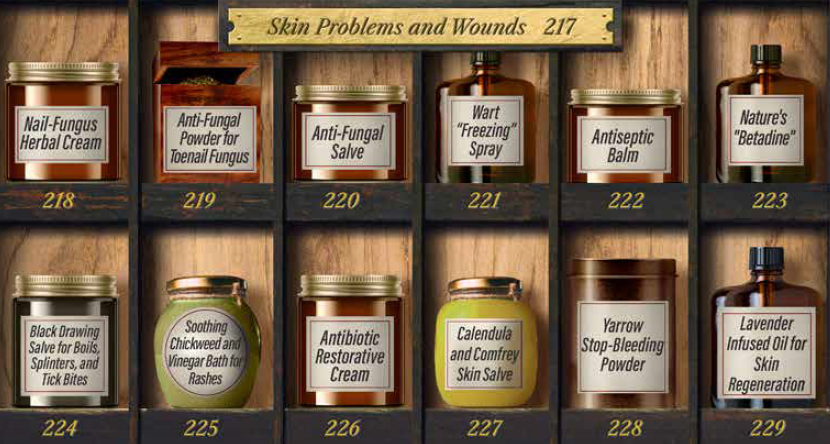
What you’ll actually learn to make:
- What really happens when you pour honey over cinnamon
- How to make the antibiotic you can smoke
- The Mucus Buster that breaks up stubborn chest congestion
- A gentle herbal balm for herpes sores
- The Homemade Lung Shield recipe for easier breathing
- The remedies that always disappear first in a crisis
- How to make a Gut-Healing Elixir that supports your digestion
- The Memory Elixir shown to boost recall by up to 75%
- Nature’s aspirin — without the stomach irritation
- Herbal sleeping pills that work without the “groggy tax”
The book covers everything. Nervous system remedies to immune boosters, digestive healing, cardiovascular support, hormonal balance, skin problems, joints, muscles, hair, teeth, reproductive health, urinary issues, and complete detox protocols.
Once you have these recipes, you make them yourself. You control the ingredients, the quality, and the cost. The average American spends $1,742 yearly on pharmacy visits. Having this book means you stop paying for remedies and start making them.
🌿 Get The Forgotten Home Apothecary Now 🌿






